The Rosewill Hive 850W PSU Review
by E. Fylladitakis on July 28, 2015 9:00 AM EST- Posted in
- PSUs
- Cases/Cooling/PSUs
- Rosewill
- 850W
Hot Test Results
As we can see in the results displayed in the following tables, the Rosewill Hive 850W offers acceptable power quality considering its price range and performance class. The maximum ripple on the 12V line was 40mV under full load, a very good figure. However, the Hive 850W is not really fond of getting cross-loaded, as the ripple of the 12V line increased by over 50%. Nevertheless, 64mV is a mere half of the 120mV design limit. Voltage regulation could see some improvement, as we recorded a fluctuation of 3.4% for the 12V line and about 2.5% for the 3.3V/5V lines. On an absolute basis these are good figures, but relatively speaking high performance products nowadays rarely surpass 2%.
| Main Output | ||||||||
| Load (Watts) | 174.13 W | 432.52 W | 633.8 W | 841.92 W | ||||
| Load (Percent) | 20.49% | 50.88% | 74.56% | 99.05% | ||||
| Line | Amperes | Volts | Amperes | Volts | Amperes | Volts | Amperes | Volts |
| 3.3 V | 2 | 3.39 | 4.99 | 3.38 | 7.48 | 3.32 | 9.98 | 3.31 |
| 5 V | 2 | 5.08 | 4.99 | 5.07 | 7.48 | 5 | 9.98 | 4.95 |
| 12 V | 12.79 | 12.29 | 31.97 | 12.21 | 47.95 | 11.92 | 63.93 | 11.88 |
| Line | Regulation (20% to 100% load) |
Voltage Ripple (mV) | |||||
| 20% Load | 50% Load | 75% Load | 100% Load | CL1 12V |
CL2 3.3V + 5V |
||
| 3.3V | 2.4% | 8 | 16 | 24 | 30 | 12 | 26 |
| 5V | 2.6% | 12 | 18 | 30 | 34 | 14 | 34 |
| 12V | 3.4% | 16 | 22 | 28 | 40 | 64 | 16 |
Meanwhile the Hive 850W's temperature rating of 40°C is not doing it any favors in our hot test. As we run our hot test at temperatures over 45°C, the Hive is operating outside of its comfort zone. Reducing the ambient temperature of our hotbox testing to base it around the Hive's 40°C is an option here, but ultimately we chose not to do so as any change for the Hive 850W in particular would mean that the results here would not be comparable with our previous reviews.
High ambient temperatures have a strong negative effect on the electrical performance of the Hive 850W. The energy conversion efficiency is reduced by an average of just 1.5%, yet the effect is stronger at high loads, where the performance of the Hive 850W was already suffering. Considering that this unit is rated at 40°C and we have over 50°C ambient temperature with the Hive 850W under maximum load, these are overload conditions for this unit and it shows, as the efficiency drop is over 2.4% and the internal temperatures are very high.
The high internal temperatures of the Hive 850W decrease the efficiency of its active components, creating a cascading effect that increases the heavy load temperatures of the Hive 850W even further. The lack of efficiency combined with the simplistic cooling design creates a major thermal load that cannot be easily dissipated, leading to heatsink temperatures nearing 100°C under maximum load. There is little that the small and plain heatsinks of the PSU can do under these conditions, leaving the fan to cope with the high thermal load. As a result, the fan reached its maximum speed, generating intolerable noise levels while the PSU was heavily loaded inside the hotbox.


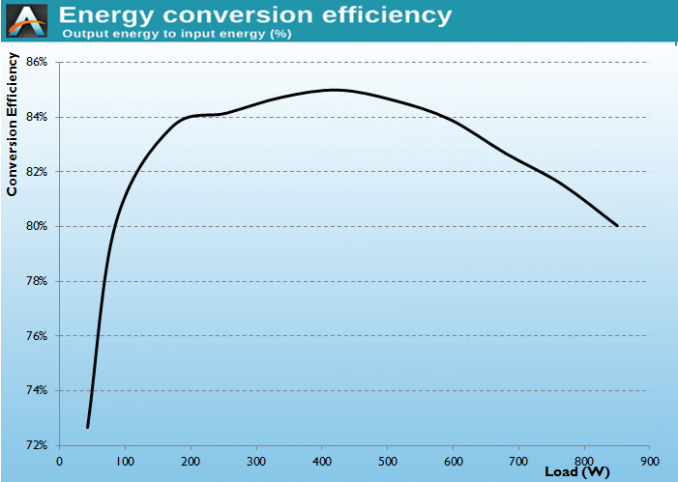
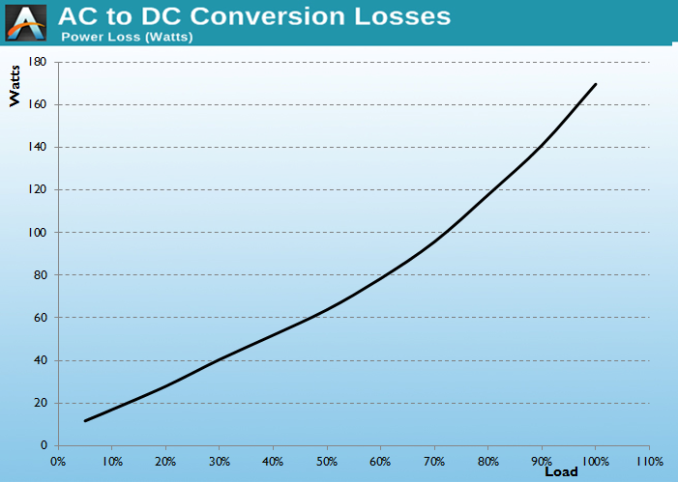
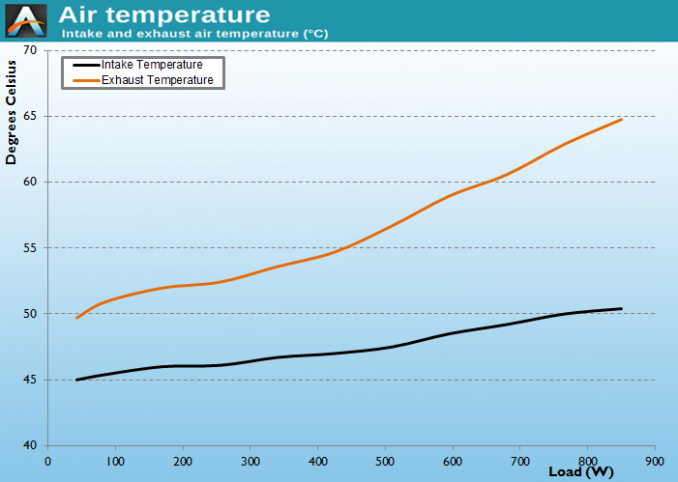
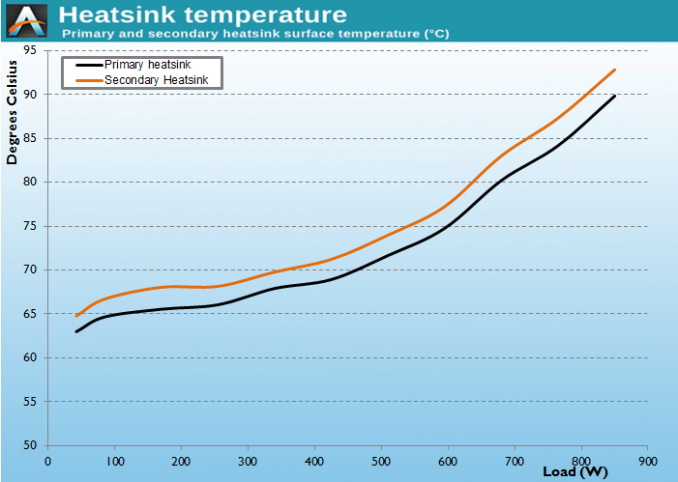
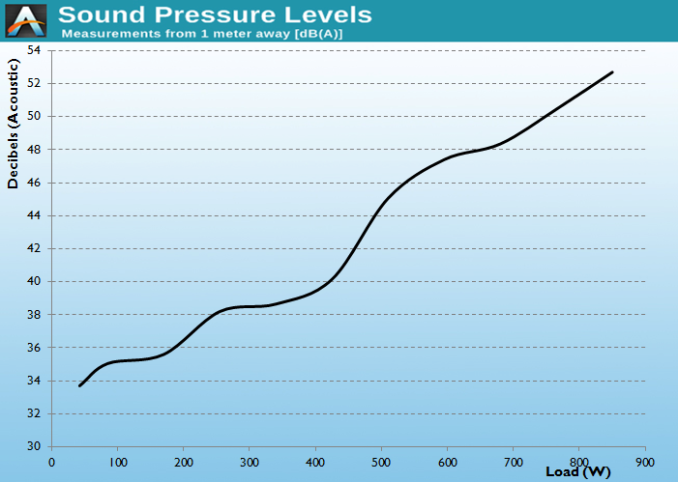








24 Comments
View All Comments
DanNeely - Tuesday, July 28, 2015 - link
This is the first PSU I've seen using flat ribbons for the 24pin ATX cable. Is it able to alleviate the stiffness that normally makes the sleeved monster such a pain to route behind things?piasabird - Tuesday, July 28, 2015 - link
Silverstone makes a set of flexible flat ribbon cables that are of a shorter length for use with their fully modular power supplies. Silverstone PP05-E 0.98 ft. Flat Flexible Short Cable Set for SilverStone Modular PSUs. http://www.newegg.com/Product/Product.aspx?Item=N8...DanNeely - Tuesday, July 28, 2015 - link
Do they sell individual cables, IIRC my PSU is a Silverstone and it is modular; but all my smaller cables are the flat type. Only the 24pin legacy cable is the fat sleeved style.Cellar Door - Thursday, July 30, 2015 - link
Thank you Sir!meacupla - Tuesday, July 28, 2015 - link
It has its own set of benefits, but also has some drawbacks.Overall, I think individual strands are the easiest to work with, but only if they neatly come out of the PSU. Otherwise, the ribbon is moderately easier to work with than sleeved.
Impulses - Tuesday, July 28, 2015 - link
I dig that flat ribbon, specially with today's cases that have plenty of cable holes... I still don't get why individually sleeved strand cables got so popular, they look ok if you have combs in them to keep them very straight but with or without they're still bulkier and harder to hide.We moved away from PATA cables for a reason and the current craze over single strand braids basically leaves them looking like fancy PATA cables (that you can't fold as easily as the old thin PATA cables).
meacupla - Tuesday, July 28, 2015 - link
The move away from PATA cables was because of ease of installation, rather than how poorly they could be routed.In fact, PATA cables were a lot easier to work with. Done right, they were far less restricting to airflow than spliced and bundled cables.
extide - Tuesday, July 28, 2015 - link
The move away from PATA had pretty much zero to do with aesthetics or installation ease. It's purely an engineering reason why we moved from a slow parallel bus to a fast serial bus. Those other reasons are purely side benefits.meacupla - Wednesday, July 29, 2015 - link
you say that, but at that point in storage technology, the disks were barely saturating 66Mbps and it took intel, nvidia and VIA quite a while to implement SATA as a native feature in their chipsets.Impulses - Thursday, July 30, 2015 - link
That was my point, we used to splice and play origami with PATA cables to avoid that big chunky flat cable look that the fancy braided cables now end up replicating...